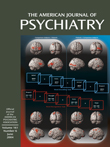The importance of the alterations in the activity of specific neural circuits in the pathophysiology of psychiatric disorders is not a new notion. However, coupling these concepts with the intracellular signaling mediated by neuronal membrane receptors and ion channels is a novel point of view, as is the subsequent link to psychopharmacology. Brain Circuitry and Signaling in Psychiatry provides an updated overview of the interface of these two cutting edge subjects. The first two chapters provide a concise review of both neural circuitry and neuronal signaling pathways. For the nonneuroscientist, these reviews are informative and succinct. Chapter 2 is quite reader-friendly, and the sections titled Second Messenger-Protein Kinase System and Second Messenger-Induced Gene Transcription and Synaptic Remodeling summarize recent advances in neuroscience concerning how neurons respond to extracellular signals as well as the rapidly expanding area of neuroplasticity. The remaining six chapters discuss neural circuitry and signaling in common neuropsychiatric syndromes, including schizophrenia, addictive disorders, anxiety, depression, bipolar disorder, and dementia.
Chapter 6 is of particular interest because many recent findings about the role of cAMP/protein kinase A/cAMP response element binding protein pathways and brain-derived neurotrophic factor signaling in depression and neurogenesis are summarized. The review of circuitry and signaling in anxiety disorders is also quite comprehensive. In particular, the neurobiology of fear and anxiety with an emphasis on the roles of the anterior thalamus and the lateral and central nucleus of the amygdala is well discussed. The latter structure plays a critical role by integrating the outputs and coordinating the autonomic and behavioral responses through interactions of other brain structures, including the locus caeruleus, paraventricular and lateral hypothalamus, hippocampus, and cerebral cortex. Neural circuitries and related signaling in panic disorder, posttraumatic stress disorder, and obsessive-compulsive disorder are also discussed extensively.
Although chapter 2 reviews many of the major signaling pathways in neuronal cells, proinflammatory cytokines such as interleukin-1, interleukin-6, tumor necrosis factor-alpha, and interferon-mediated signaling, surprisingly, are not discussed. A large body of evidence supports the hypothesis that cytokine-mediated signaling also plays an important role in certain psychiatric disorders, as evidenced, for example, by interferon-alpha-induced depression in the treatment of patients with hepatitis C. In addition, in chapter 8, the Alzheimer’s disease section should probably be expanded to include areas such as signaling related to N-methyl-d-aspartic acid, oxidative stress, and nonsteroidal antiinflammatory drugs. Nevertheless, this book is worth reading for those who want to update their knowledge of the interface of two burgeoning research areas, neural circuitry and neuronal signaling.

